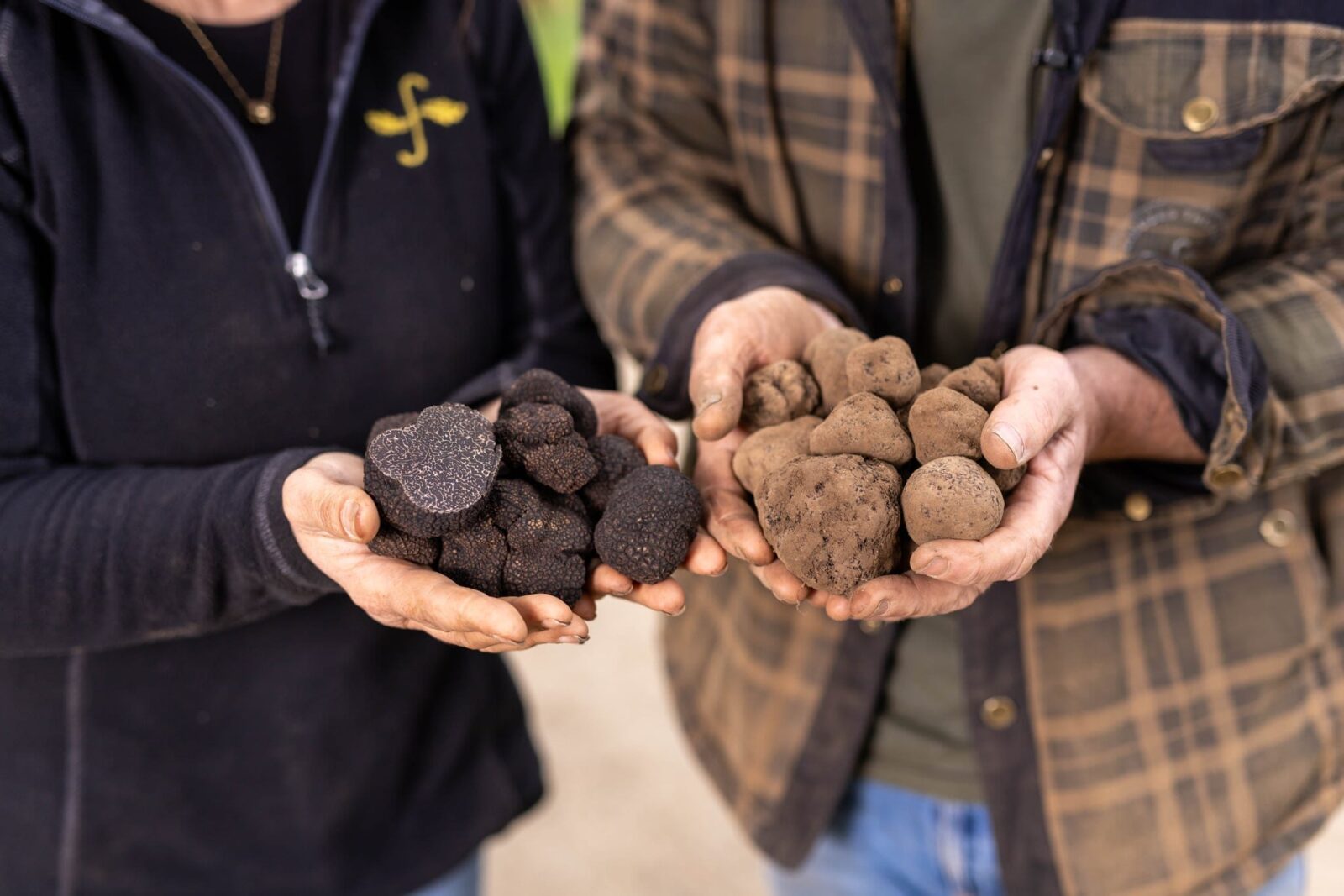New Chair appointed to steer future direction of Thoroughbred Horses Program

 EMERGING INDUSTRIES / Monday, 3 February 2025
EMERGING INDUSTRIES / Monday, 3 February 2025 
Australia, currently the fourth largest truffle-producing country in the world, is gaining a global reputation in culinary circles for producing some of the world’s best French black truffles, or Perigord truffles (Tuber melanosporum). In 2023, the country exported over 11 tonnes of truffles, valued at over $9 million.
Truffles are the fruiting bodies of a soil fungus that grow in association with the roots of hazelnut and oak trees. They are harvested with the assistance of specially trained dogs that can locate the truffles by scent in the top 30cm of the soil.
The Australian Truffle Orchards Integrated Pest and Disease Manual was produced as part of a research project jointly funded by AgriFutures Australia’s Emerging Industries program and the Western Australian Department of Primary Industries and Regional Development (DPIRD). This manual is an update to a previous version published in 2019 in collaboration with the Australian Truffle Growers Association (ATGA), Truffle Producers Western Australia (TPWA), the Australian National University (ANU) and the Department of Primary Industries New South Wales (NSW DPI).
DPIRD research scientist Ms Rachelle Johnstone said the manual is a great resource for growers across the country to aid orchard management to optimise productivity and profitability.
“This manual is a practical tool to help existing growers and those new to the industry to identify and manage the pests and diseases most likely to be found in their orchards,” she said.
As part of the project, researchers investigated the feasibility of alternative pest management options such as biological control, mass trapping and organic insecticides, which are included in the manual. Weed management alternatives such as flame weeding and organic herbicides, like nonanoic acid and pine oil, were also assessed through field trials.
“While these measures were generally not as effective as standard chemical herbicides, if used selectively and in combination with other strategies such as mowing, the use of chemical herbicides could be reduced as part of an integrated approach to weed management,” Ms Johnstone said.
The first Australian-grown black truffle was harvested in Tasmania 25 years ago. Since then, the industry has expanded to all Australian states and the Australian Capital Territory, with the majority of production in south-west Western Australia.
AgriFutures Australia, Emerging Industries Senior Manager, Dr Olivia Reynold said AgriFutures’ investments respond to grower needs and align with the industry’s vision of making Australian truffles synonymous with superior quality and clean credentials.
“We are focused on research and investment to support sustainable industry growth and maintaining that extremely high standard of quality that Australian truffles are becoming renowned for,” Dr Reynolds said.
Download the Australian Truffle Orchards Integrated Pest and Disease Manual here
Subscribe to the Emerging Industries mailing list here.
View more resources at AgriFutures Australia Knowledge Hub.
The project was supported by the Department of Primary Industries and Regional Development, WA, in collaboration with the Applied Agricultural Remote Sensing Centre (University of New England) and the Australian National University, through funding from AgriFutures Australia as part of its AgriFutures Emerging Industries Program, and with contributions from Truffle Producers Western Australia Inc.
 THOROUGHBRED HORSES / 03.02.25
THOROUGHBRED HORSES / 03.02.25  THOROUGHBRED HORSES / 03.02.25
THOROUGHBRED HORSES / 03.02.25  WORKFORCE AND LEADERSHIP / 03.02.25
WORKFORCE AND LEADERSHIP / 03.02.25